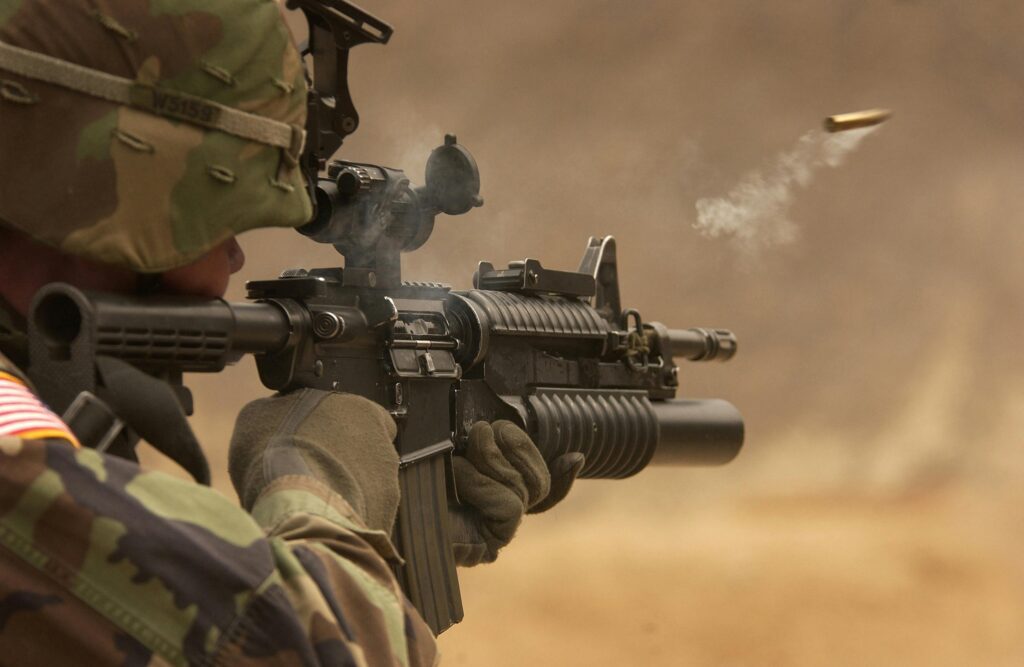Grey Zone Warfear – the Taiwan defence ministry sent a to the national parliament in which it report said that China has stepped up grey-zone warfare against Taiwan, aiming to make the areas around the democratic Island “saturated with balloons, drones and civilian boats The Taiwan government has complained in recent years that China has been using this type of warfare, which wields irregular tactics to exhaust a foe without resorting to open combat. China has attempted to increase the burdens of our naval and air forces and to obscure the existence of the median line in the strait, the report said, referring to an unofficial border between the two sides, which China’s forces have begun regularly crossing in recent years. In a conflict, China will try to speedily seize Taiwan and prevent external intervention, the ministry added. To complicate that, the island is working to diversify its command systems and incorporate more mobile and long-range weapons, as well as artificial intelligence, while boosting connections with democratic allies, including the United States.

What is Grey Zone Warfare?
What is Grey-zone Warfare? Although the definition of “grey zone” is imperfect and not fully agreed upon, yet it is generally defined as the use of coercive measures to exploit the operational space between peace and war that deliberately stay below a threshold so as not to prompt a conventional military response to alter the status quo which otherwise would have been attracted. It consists of a set of activities that occur between peace (or cooperation) and war (or armed conflict). A Cold War legacy One can argue that activities in the grey zone have always been a feature of great-power competition. Proxy wars, destabilizing insurgencies, legal warfare lawfare and information warfare – by adversaries and allies alike have been a feature of conflict for millennia. But the cost of conventional conflict in the nuclear era has grown too steep, and the risk of escalation too profound. As a result, nations seek to promote their national objectives through aggression conducted covertly, or with obfuscated attribution or justification, in order to achieve their goals.
The Cold War Era
The Cold War Era, which began after the end of the Second World War in 1945, led to conditions that favoured grey-zone warfare. Amid the US-USSR rivalry for ideological and economic dominance, the knowledge that both parties were armed with nuclear weapons meant direct conflicts had to be restrained. Hence, the conditions of the Cold War era spurred the adoption of grey zone tactics to avoid catastrophic escalation. While the Soviet Union, its Warsaw Pact allies, and even the United States and its partners operated in what we now call the “grey zone” during the Cold War, the available mediums and vulnerabilities have only increased with the globalization of trade and capital markets, as well as the proliferation of the internet and social media. The strength of open and transparent societies also tends to provide multiple avenues and opportunities for competitors to operate in the grey zone. Both China and Russia have actually accused the United States of engaging in grey-zone activities, e.g. engaging surrogates such as contractors in a conflict or instigating the “colour” revolutions in Georgia, Ukraine and Kyrgyzstan.

TACTICS
TACTICS – A multitude of activities fall into this murky in- between from nefarious economic activities, influence operations and cyber attacks to mercenary operations, assassinations and disinformation campaigns. Generally, grey-zone activities are considered gradualist campaigns by state and non- state actors that combine non-military and quasi- military tools and fall below the threshold of armed conflict. They aim to thwart, destabilize, weaken or attack an adversary, and they are often tailored toward thevulnerabilities of the target state. While grey-zone activities are nothing new, the onset of new technologies has provided states with more tools to operate and avoid clear categorization, attribution and detection. Characteristics Below the threshold of armed conflict: The grey-zone activities remain below the threshold of igniting a full-fledged military offensive as a justified response, often through the use of non-military tools.
Example: The Russian attack on Crimea and China’s action in the South China Sea are examples of grey-zone warfare Progressive unfolding of aggressive moves: The strategy followed here is aggressive-passive resistance being dragged over decades to keep the dispute alive on the one hand while also providing a false narrative of engaging in talks to resolve the dispute, thus deterring a decisive response. Example: China’s use of the Salami Slicing tactics to change territorial status quo with its neighbours.
Risk of Escalation
Grey-zone aggression uses the risk of escalation as a source of coercive leverage and deters a decisive response. Example: Indian incursion of the Line of Actual Control with China. Lack of attributability: The aggressor country can simply deny its involvement and deflect response in a grey-zone campaign which obstruct the potential for successful deterrence. Example: Cyberattacks or disinformation campaigns or the use of proxy forces, election meddling (Russia’s in US elections)
Targeting Specific Vulnerbilities
The grey zone campaigns target specific vulneralibilities in the targeted states with targeted campaigns aimed at creating chaos. Funding terrorism and insurgency in other countries by arming splinter groups. Strong responses appear to be counterproductive as the aggressive country takes advantage of the strategic ambiguity in relations, whereby there are competing strategic, economic and domestic political reasons not to engage in full- fledged conflict. Example: India’s ban on Chinese applications in the wake of the Doklam standoff is not considered a strong response by India. Why is grey-zone warfare seen as a separate category of action?
Firstly, the challenges that grey-zone warfare poses differ from those of an open conflict. Here, action is often covert or indirect, meaning a country’s response needs to be appropriate in terms of its scale. Actions could be designed to bait the other party into escalation, which would thus free the forces of the country launching such warfare to respond in kind and the use of force would then be legitimized as a form of self-defence or response in kind to what the other party does. Other reasons for engaging in such tactics include the projection of strength, and to normalise disputed territorial claims by repeatedlymarking a presence in those regions. Judging by its appearance, grey-zone conflict seems mild when compared to traditional strategic competition. However, the limited intensity does not make grey-zone conflict less vicious. Rather than escalate in one dimension, it tends to escalate in multiple dimensions and leads to unintended over-escalation, creating a nightmare forcrisis management.
Examples South China Sea Disputes
Examples South China Sea Disputes – China’s assertive actions in the South China including maritime militia presence and territorial claims, exemplify grey-zone warfare. Confrontations with countries like the Philippines underscore the contentious nature of these tactics. Taiwan Strait tensions: Chinese military manoeuvres near Taiwanand Taiwan’scomplaints of increased Chinese military activity highlight the use of grey-zone strategies to pressure without provoking outright conflict. US-China economic rivalry: Economic sanctions, trade tariffs and maritime reconnaissance efforts by the United States against China illustrate grey-zone competition beyond military realms.
Conclusion
In conclusion, the escalation of grey-zone warfare tactics by China against Taiwan underscores the evolving nature of modern conflict. Characterized by activities deliberately designed to stay below the threshold of open combat, grey-zone warfare aims to exhaust adversaries through irregular tactics while avoiding conventional military responses.
Taiwan’s defense ministry report highlights China’s efforts to saturate areas around the island with balloons, drones, and civilian boats, aimed at increasing the burden on Taiwan’s naval and air forces. Additionally, China’s disregard for the median line in the Taiwan Strait, coupled with its attempts to swiftly seize Taiwan and prevent external intervention, further exemplify its grey-zone strategy.
Understanding grey-zone warfare is crucial, as it represents a strategic shift in great-power competition. Derived from the conditions of the Cold War era, grey-zone tactics exploit the space between peace and war, utilizing a combination of non-military and quasi-military tools to achieve strategic objectives while minimizing the risk of escalation.
Key characteristics of grey-zone warfare include actions below the threshold of armed conflict, progressive unfolding of aggressive moves, the use of risk of escalation as leverage, lack of attributability, and targeting specific vulnerabilities in the adversary.
Examples such as China’s actions in the South China Sea disputes and tensions in the Taiwan Strait illustrate the complexity and impact of grey-zone warfare on regional stability. Moreover, the US-China economic rivalry highlights the extension of grey-zone competition beyond traditional military realms, encompassing economic sanctions, trade tariffs, and other coercive measures.
In this context, recognizing grey-zone conflict as a distinct category of action is essential for effective crisis management and response strategies. While seemingly mild compared to traditional conflicts, grey-zone warfare can lead to unintended over-escalation and pose significant challenges for international security and stability. Thus, addressing the complexities of grey-zone warfare requires comprehensive understanding and adaptive responses to safeguard against potential threats and maintain peace in the region.
